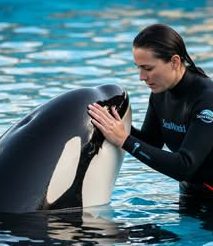Introduction
Recently, a short video clip showing a massive orca whale in an unexpected setting went viral on social media platforms. Thousands of people shared and reacted to the video with amazement, fear, or curiosity. But the truth is that this video is not real; it was created using advanced artificial intelligence (AI) technology.
In this article, we’ll explain what the video shows, why it spread so quickly, how AI-generated content has become so realistic that it’s hard to tell apart from real footage, and why it’s important to always verify what we see online.
What Does the Video Show?
The video shows a scene where an orca whale appears to be attacking a trainer or a person in a water environment, with dramatic sounds and commentary designed to evoke strong emotions. Although the scene looks realistic at first glance, technical and journalistic analyses confirm that the video is fabricated and does not depict a real incident.
Why Did the Video Spread So Fast?
Several reasons explain the rapid spread of this video:
- Sensational visual content grabs users’ attention and encourages sharing.
- Dramatic stories about dangerous encounters with marine animals attract public interest.
- New AI technologies enable the creation of realistic videos without complicated editing.
- Lack of source verification before sharing accelerates dissemination.
How Are Realistic AI Videos Created?
Modern AI tools use complex models to generate images and sounds based on input data. These tools can:
- Create faces and movements of people who do not actually exist.
- Synthesize fake audio that mimics human voices and tones.
- Modify the surrounding environment to add natural-looking lighting and water effects.
As a result, distinguishing real from fake videos has become more challenging and often requires expertise or specialized tools.
The Importance of Verifying Videos and Information
When encountering surprising or sensational videos, we should take steps to verify their authenticity, such as:
- Checking the original source of the video and confirming if it’s from a trusted account.
- Reviewing official news outlets and press reports about any similar incidents.
- Using video verification tools to detect manipulation.
- Reading comments from experts and fact-checkers in the field.
What Are the Risks of Sharing Fabricated Videos?
- Spreading false information that distorts people’s understanding of reality.
- Causing unnecessary panic and fear among the public.
- Reducing trust in media outlets and legitimate sources.
- Exploiting viewers for commercial gain through advertisements.
Summary
The circulating video showing an orca attacking a trainer or person is an AI-generated fabrication and not real. We urge everyone not to share such videos without confirming their accuracy and to rely on credible sources.
